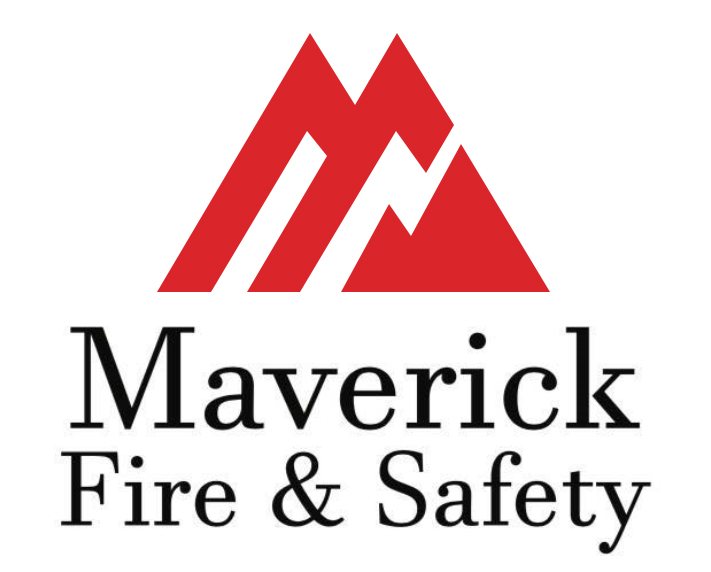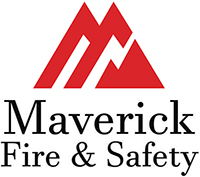Ever wonder what is involved when we perform an inspection on a company’s fire alarm system.
Alert the Authorities
First, we contact the monitoring station and the fire department to inform them that Maverick Fire and Safety will be inspecting and testing the fire alarms at a business, hotel or office building. This is obviously a very important step because as the fire alarms are tested, you do not want the fire departments to waste their resources on the false alarms.
It Takes Two to Inspect
Once the authorities have been notified that inspections and testing will be taking place, the technicians grab their tools and enter business to start the inspection.
To inspect and test the fire alarms, it takes a team of two technicians. The first technician is stationed at the fire alarm panel, while the second technician goes from floor to floor or location to location inspecting and testing the smoke detectors, fire alarm pull stations, and the fire alarm horns & strobes. The technician at the fire panel checks to see that the fire alarm panel is activated when a smoke detector or fire alarm pull station is activated.
Start at the Top
In a multi floor building, the first technician is stationed at the single fire alarm panel while the second heads up to the top floor to start inspecting and testing the fire alarm components. The technician heading to the top floor states that it’s good to always start at the top of buildings and work their way down, ensuring that every smoke alarm and pull station is tested.
Inspecting & Testing the Smoke Detectors
To test a smoke detector, the Maverick technician uses a special tool that looks like a cup on the end of a pole. At the bottom of the cup is an aerosol can that contains a spray that imitates smoke and will cause the smoke detector to activate. The cup is placed over the smoke detector and the technician applies a little pressure that causes the aerosol can to spray a tiny amount of “fake smoke”. In about five seconds, the smoke detector detects the smoke and activates, which causes the fire panel to go off.
At the fire panel, the other technician checks to see that the smoke detector was activated and that it has identified with the proper location. Ensuring the detector’s location is identified correctly is essential, as firefighters and first responders will know exactly where the fire is located in the building when they arrive. The testing technician continues moving through the building to check each and every smoke detector on each floor.
Inspecting & Testing the Fire Alarm Pull Stations
The next thing the technician checks are the fire alarm pull stations. To test the fire alarm pull stations, the technician pulls the handle to activate the pull station. At the fire alarm panel, the other technician sees the notification that the pull station was activated and relays that information back to the other technician. With a key, the technician is then able to reset the pull station. When testing the pull stations at this time, the fire alarm horns and strobes have been deactivated as to not disturb any occupants in the building. Later on, the technicians will test the horns and strobes to ensure they are working on all floors.
Testing the Fire Alarm Sounds & Lights
One of the last steps is to test the fire alarm horns and strobes. To do this, the technician at the fire alarm panel first activates the horns and strobes and then the other technician pulls a handle on one of the fire alarm pull stations to cause them to go off. Before they do this however, they go from floor to floor to inform any occupants that they will be turning on the fire alarm horns and strobes for a short period of time unless the building is unoccupied. Once everyone has been notified, one of the technicians activates the fire alarm horns and strobes from one of the pull stations and both technicians walk each floor to check that every horn and strobe is working. They both meet back at the fire alarm panel and turn off the horns and strobes.
Checking the Batteries
One of the last and final steps of an inspection is to test the fire alarm panel’s battery backup. Inside the fire alarm panel, there are batteries that provide power to the fire alarm control panel in the event of a power outage. The batteries are tested to ensure they are sufficient. If the batteries fail, then they are replaced. The batteries are also tested in the notification appliance circuits (NAC) panel which is part of the fire alarm system and located beside the fire alarm panel. The NAC is what helps power and connect the detectors, lights, horns, and fire alarm components to the fire alarm panel.
Fire Alarm Inspection Complete
There are a lot of steps that go into inspecting the fire alarm system of a building. Each step is critical in order to ensure the entire fire alarm system works in the event of a fire.

